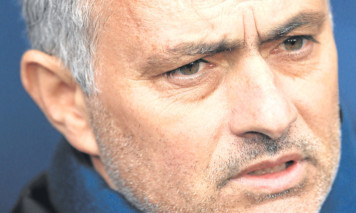Jose Mourinho was sacked at Chelsea because he forgot or stopped caring that even for the manager, football is a team game.
His sacking proves no one is bigger than the club or the dressing room.
Ultimately, all his previous success counted for nothing when measured against the expectations of the owner and the current disastrous form of the club in England’s top division.
The manager, an increasingly divisive figure, fell victim to player power.
His brutal and public assessment that those players had betrayed him, in the wake of their defeat to Leicester City, was the final nail in his coffin.
Mourinho previously had the unerring backing of his staff but his increasingly erratic behaviour finally resulted in his “Et tu Brute” moment as previously loyal dressing room stars turned on him.
In football, the arts of coaching and management are two different skills.
A manager can lay down the essential elements of how he wants the game played and then hand the coaching over to others.
Managing the enormous egos of multi-millionaire players who are financially secure for life cannot be delegated, though.
The manager has to pamper and persuade in equal measure.
A football dressing room has cliques like any other workplace.
When senior players of status decide the manager has outlived his usefulness, they usually win.
It is much easier to get rid of one individual than a clutch of players so no matter how big a name the boss has been there can only be one winner when the dressing room turns.
Of course, this scenario only happens when the team is failing.
Success in football allows all sorts of misbehaviour to be tolerated by fans and owners alike.
It is only when the results turn bad that the manager’s head is called for.
Mourinho will not be out of work long because football is full of employers who will hire him regardless of his increasingly arrogant behaviour.
His departure, though, also highlights the remarkable success that Sir Alex Ferguson had as the manager at Manchester Utd and crucially, his ability to adapt to a rapidly changing environment.
Fergie was notorious in his early management career as a man who could dish out the hairdryer treatment.
When the Bosman ruling freed football players from the suffocating control of their clubs, and into the bargain made many of them very rich, a new way of managing had to be found.
Ferguson made the transition from dressing-room dressing downs to a much more modern and sophisticated management style with ease.
This was recognition of a changing football world in which players simply didn’t need to and wouldn’t accept the old ways of tyranny.
Ferguson’s brusque and often rude behaviour was subsequently reserved for the media for whom he had little time but his style with the players was modern management personified.
Mourinho fell into the trap of forgetting how to keep friends and influence people.
In anointing himself as the Special One he paid self homage to his own particular brand of people skills.
Somewhere along the way he lost them.
